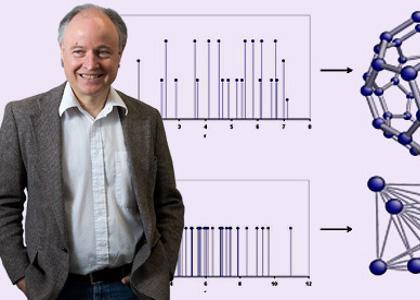Atomic Structure of Complex Nanoparticles

Professor Duxbury’s group uses the HPCC to solve basic problems in nanoscience and nanotechnology.
The figure illustrates a novel inverse problem that arises in finding the atomic structure of complex nanoparticles. The problem is easily stated but hard to solve: Given a list of interatomic distances, find the locations of the atoms or points in the structure. This inverse problem arises in protein structure determination, small molecule and nanoparticle structure determination and in a variety of other science and engineering applications. Two students are working on these problems, and in collaboration with the Billinge group at Columbia and the Punch group in CSE, we have developed three classes of algorithms to solve them. The first two algorithms work well for structures with symmetry such as the fullerenes [1-3], while the other works well for structures with less symmetry, such as random point sets [4]. Dan Olds, a current graduate student, is studying a different structure determination problem, small angle scattering from solar cell and fuel cell morphologies.
Mr. Jiwu Liu, a recent graduate, used the HPCC to carry out molecular dynamics simulations of nanoparticle formation from polymer chain precursors, and through these simulations to understand how polymer synthesis can lead to targeted nanoparticle shapes, flexibility and function. There are several important differences between the way in which proteins fold to their native states and the current synthetic routes to collapse polymer chains to their nanoparticle forms. One critical difference is that polymer chains are most often irreversibly cross-linked, yielding more durable nanoparticle end products. This highly non-equilibrium process is computationally demanding and is greatly facilitated by the HPCC [5]. A new student is continuing this work using models for polymer chain precursors that Dr. Baker’s group is synthesizing. The interaction of these nanoparticles with lipid bilayers is also being studied.
In collaboration with the Mackay group at Delaware, we have developed models for the morphology of polymer nanoparticle mixtures [6] and are extending this approach to the morphology of bulk heterostructure solar cells. We are developing a suite of methods to simulate the morphology, calculate the scattering from these morphologies and to calculate the dependence of photovoltaic device performance on morphology.
